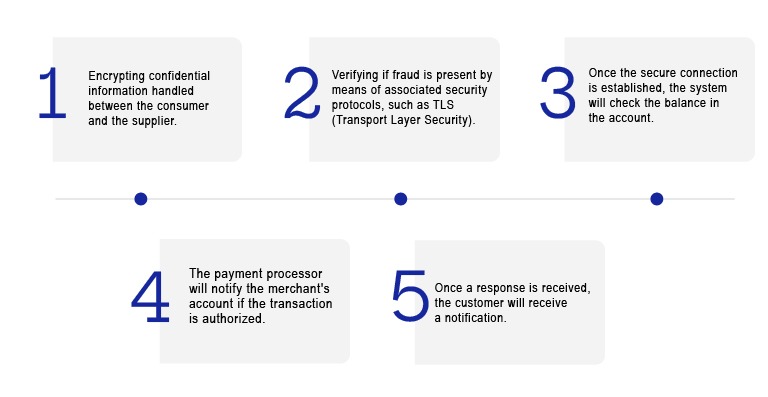There are different interbank payment methods. If you are thinking of developing or growing your business, you should read on.
Countless companies around the world contribute to the nearly $2 trillion that flows through the cross-border interbank payment system each year. The boom in the volume of international online sales, as well as the emergence of new business models and customer demand, prompted online payment providers to develop faster and more efficient cross-border payment solutions, with the intention of facilitating purchases.
NFC payments: what you need to know about contactless payments
Cross-Border Interbank Payment System (CIPS)
Today, electronic payments continue to gain momentum in Latin America because they allow you, as a customer, to make money transfers faster and easier. However, you may be wondering what the Cross-Border Interbank Payment System is and how it works.
This system is a service that allows the customer of a financial location to electronically transfer capital from their account to a beneficiary of another entity.
An efficient and reliable interbank payment service is essential for the operation of your business because through this instrument, both buyer and seller can enjoy the advantage of the free movement of goods, services and capital.
Under this premise, online payment providers are crucial to obtain benefits in your business, since they are platforms developed to send and receive money. In other words, they are a mechanism that will provide you with the necessary support.
PayPal, AirTM and Payoneer are just a few of today is payment service providers that allow for an automated conversion process, enabling faster and more reliable transfers.
Keep in mind that a suitable online payment provider should receive different forms of payments in multiple channels and make cross-border disbursements as simply and efficiently as possible. To this end, the platform must comply with all regulations and ensure, among other things, that the correct validation of the customers registration data from a telephone number or e-mail is carried out.
Today, we know that business models are changing and we have already seen that there are several methods to facilitate interbank payments. One of them is SWIFT.
ABCs of cross-border transactions
What is the SWIFT system?
If you are wondering «what is the SWIFT system?», you should know that it is the most widely used method for companies to transfer funds across borders. SWIFT stands for «Society for Worldwide Interbank Financial Telecommunication» and is the financial identification code par excellence, since it is indispensable for making international transfers.
SWIFT for Electronic Funds Transfers
In detail, SWIFT is used to communicate money transfers between banks. In other words, it does not actually transfer capital, but communicates transaction orders between institutions through these codes.
What is inside a SWIFT Transaction?
Each bank has an international ISO 9632 code that identifies it within the system and is composed of:
- Plan Code
- Bank code
- Additional data, such as location.
Why is SWIFT dominant?
This is primarily because most international banking transactions are made through the SWIFT system. This platform allows banks to communicate with each other for international transactions. Thus, remaining outside the SWIFT code would mean remaining isolated at the international level, as it would not be possible to maneuver with the rest of the financial institutions.
Who Uses SWIFT?
The SWIFT code is used by more than 8000 financial institutions located in over 200 countries. It is also owned by global members, such as BBVA, Bank of America, Bank of New York Mellon, Société Générale and UniCredit, among others.
CIPS vs. SWIFTS
It all depends, as, for some, the People Bank of China-backed Cross-Border Interbank Payment System (CIPS) is seen as an alternative to SWIFT. It should be noted that CIPS uses the SWIFT industry standard for the syntax of banking messages, and is also coupled with the Registration Authority (RA) for ISO standards. However, it has undergone considerable expansion since its conception, so it is sure to be a talking point for much more time to come.
Excellent! The picture regarding the interbank payment system is a little clearer, and now it is essential to determine how you can benefit from these platforms to grow your business.
Having a good online payment provider will allow you to open up to the international market and capture different currencies. Now, it is time to learn how online payment processing works.
How an interbank payment system works?
Here is how it works! Once the transaction is initiated, the payment system will take care of:

Basically, online payment processing works as a virtual point-of-sale (POS) terminal, which approves credit card funds from web or mobile applications, and verifies, admits or denies the transfer of money between buyers and sellers and through different payment methods, ensuring security throughout the process.
The important thing, in any case, is to decide which online payment system is the best, though this can be a bit complicated due to the fact that there are several platforms, at PayRetailers we focus on keeping our clients informed about all the ins and outs of the interbank payment system, and help them learn how to set up a payment processor that is right for their business.
We are the global payment platform par excellence, and we are here to offer you the advice and services you need to grow your eCommerce business with the security and confidence you need in all your online transactions.
What are blockchain payments?



